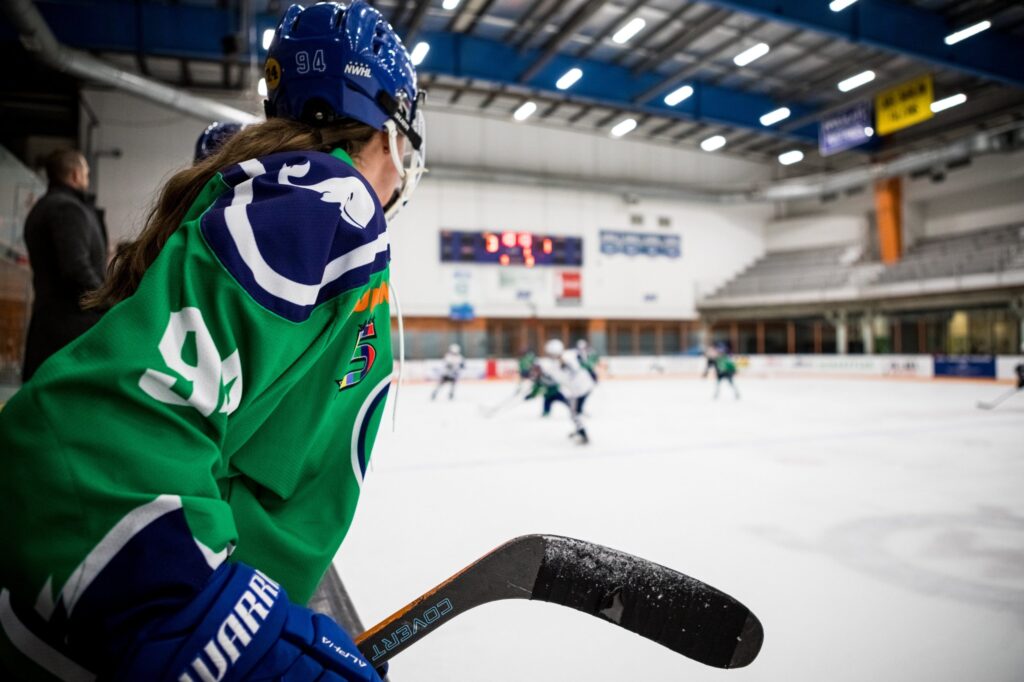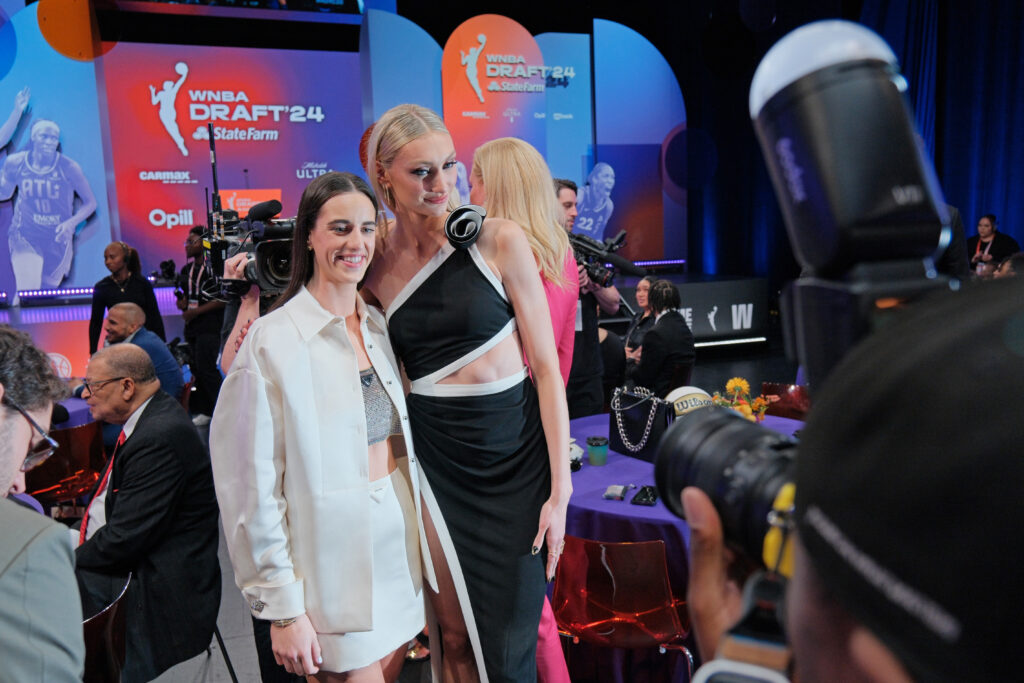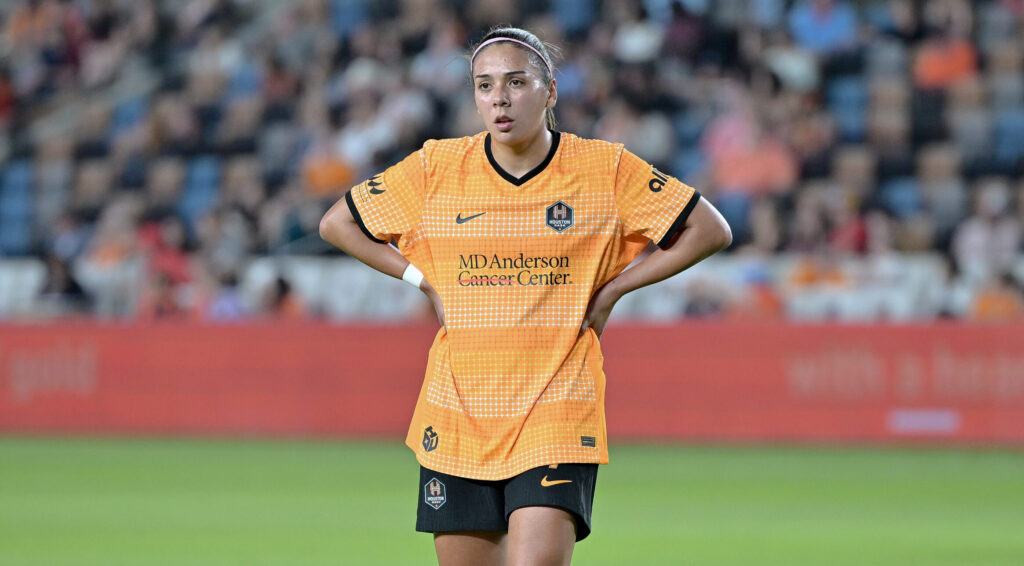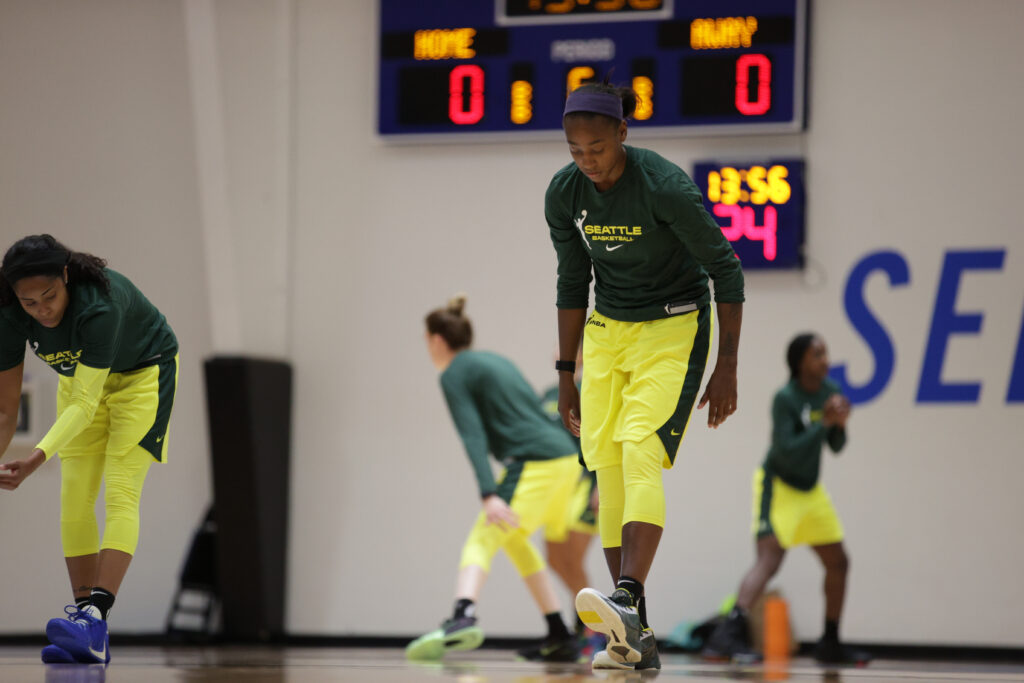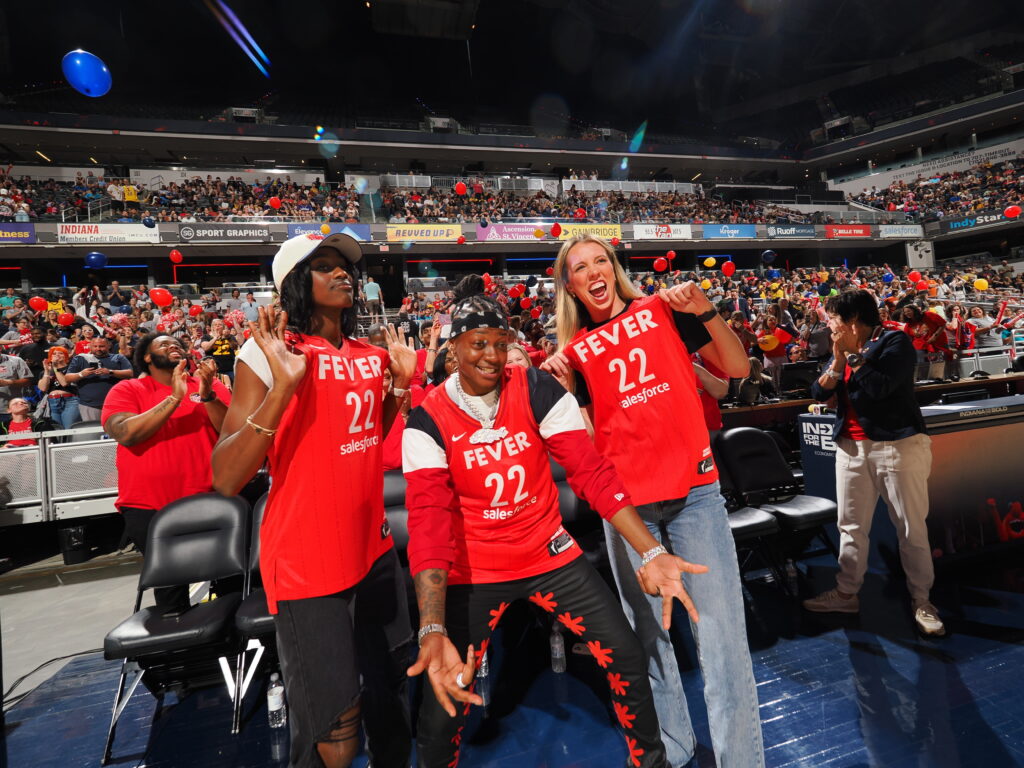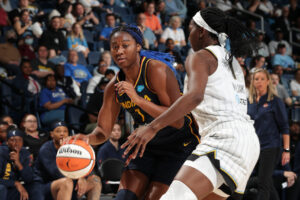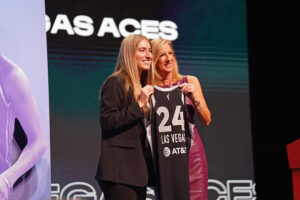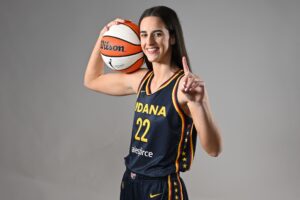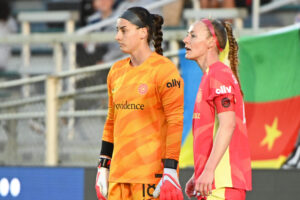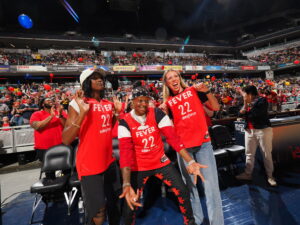In the end, there were no miracles on the ice this go-around in Lake Placid, as the NWHL was forced to suspend its season one day before the Isobel Cup semifinals were set to begin. Derailed by a multi-team COVID outbreak, the league was set to make history by airing women’s hockey games on a major cable network for the first time. Instead, everyone went home.
Not only was the announcement a disappointment for fans and players, but the available reporting now tells the story of a league that potentially cut corners in preparation for taking on this challenge, putting both teams and the community at risk.
WAS THE NWHL BUBBLE REALLY A BUBBLE?
While it’s fair to have thought that the NWHL could pull off a two-week tournament based on the success of other bubble situations (including the NHL), the safety measures in Lake Placid fell quite short of the mark, and a deeper look into the protocols the NWHL followed shows that the procedures put in place did not create a sealed bubble.
Before entering the environment, it is not clear that players and staff were required to quarantine, which meant that even though they had to test negative within 72-hours of leaving for the tournament and were tested again once they arrived, they were vulnerable to bringing in the virus undetected. This risk was further compounded as the games began before athletes were re-tested.
Though commissioner Tyler Tumminia shared during her press conference on February 3rd that PCR and rapid tests were administered “pretty much daily,” that fact, if true, wouldn’t reverse the potential initial exposure from the lack of pre-travel quarantine.
The Athletic has likewise reported that teams potentially stayed in hotels that were open to the public, brought in new players after the tournament bagan (to replace those with COVID), and shared staff among squads. The New York Times has reported that TikTok videos appear to show players hanging out together outside of their rooms while not competing, a violation of NWHL protocols.
A spokesperson for the league previously noted that fines would potentially be levied for breaking protocols. Meanwhile, a team’s official Instagram account showed players out and about in Lake Placid together.
You only have to follow the league’s changes in vocabulary to get a sense as to how the season unfolded. At the start, it was called a “bubble.” The league then started calling their set up a “modified bubble.” By the end, Tumminia was referring to it as a “restricted access environment.” Which brings us to the next big issue.
THE NWHL’S COMMUNICATION LEFT TOO MUCH IN THE DARK
All leagues operating within bubble environments have had to contend with HIPAA requirements that protect the identities of those who test positive for COVID-19. That said, the NWHL did little to communicate just how many cases it had, only characterizing players as “unavailable” when they could not play, further fueling speculation and confusion.
The canary in the coal mine arrived when the Riveters were forced to pull out of the tournament on January 28th after passing the allowed threshold of positive cases. When the Connecticut Whale mysteriously withdrew from competition days later on February 1st, it triggered sirens that all was not well in Lake Placid.
The NWHL did not share the extent of the spread in real time — a highly questionable decision when public knowledge about community activity and contact tracing are key to controlling the virus. The league also declined to explain why the Whale were leaving, saying they’d leave it up to the team to speak. Days passed before the Whale broke their silence. For a moment, it looked like their departure might have been left a complete mystery.
The NWHL has accepted the decision of the Connecticut Whale to forfeit their game scheduled for earlier tonight against Minnesota and to withdraw from the tournament.
— NWHL (@NWHL) February 2, 2021
As of last week, we now know that six members of the Boston Pride, including coach Paul Mara have also tested positive, with Mara telling The Boston Globe, “If I could take on all the symptoms our organization feels myself, I would… I feel terrible for them. They don’t deserve this.”
Connecticut Whale coach Colton Orr likewise told the New York Times that about two-thirds of his players tested positive.
Regarding the opaque communication surrounding player availability and the number of cases, Tumminia stated, “The reason we chose to say ‘unavailable’ was mostly because of HIPAA policies and rules. That was a defined league policy going into it. I am not allowed to tell you who has COVID. Also, the amount of numbers right now is also something that the league has taken a stance that we weren’t going to talk about. There’s varying degrees of privacy levels and HIPAA levels, and we had agreed with ORDA that we would not disclose that information.”
Protecting players’ rights is one thing. Leaving everyone in the dark is something else entirely.
THE NWHL FACED AN ADDITIONAL BURDEN
The NWHL needed to do more than just seal their bubble. Compared to other sports, the league needed to be far more scrupulous in its preparation given the inherent risks posed by the nature of hockey itself.
As epidemiologist Theresa Chapple-McGruder told the New York Times, hockey brings an increased risk of COVID transmission compared to other sports: “You’re indoors in a cold environment, so the virus is going to live longer in the cold, and then all the heavy breathing, close contact — it’s just exactly what you need to spread the virus,” she explained “It’s similar to what we saw in the meatpacking industry, because cold helps the virus survive. Hockey is no baseball.”
Now, the dangers posed by the league’s safety shortcomings have not only impacted players, coaches, staff, and the surrounding community, but they could also affect the NWHL’s positive momentum. This year, the league took major steps forward in terms of expansion, securing majors sponsors (Discover and Dick’s Sporting Goods), and locking in broadcast deals. Those were all serious accomplishments which now run the risk of being overshadowed by the league’s inability to safely stage a two week season.
RECAPPING THE NWHL TOURNAMENT
As for the hockey that was played, the Toronto Six showed everyone what happens when you combine the prowess of Shiann Darkangelo, Mikyla Grant-Mentis, Brooke Boquist, Breanne Wilson-Bennett, Sarah-Eve Coutu Godbout, and Emma Woods. Throughout the series, the Six exhibited a dominant offense and a team with solid puck possession. In the end, the NWHL’s newest team walloped their opponents statistically, outshooting the rest with a 15.83 SOG/GP. Though the Metropolitan Riveters snagged a win against them, Toronto’s showing in Lake Placid proved they are a team with incredible strength and clear staying power.
Boston and Buffalo were initially battling it out for a playoff berth before the Whale withdrew from competition. Entering the season as major underdogs, the Beauts showed up to play in Lake Placid, beating the Pride in their first meeting. The Boston squad then found their footing, answering the Beauts with a 6-0 win in their second match up before snagging another win in the third game against Buffalo.
Minnesota skated away from Lake Placid as the still-reigning Isobel Cup champs, having won the last title game staged in 2019. (The 2020 Championship game was cancelled due to COVID.) The Whitecaps ended the season with all of their players still available for games, which gave them a depth advantage throughout the tournament.
Though Connecticut didn’t get the chance to challenge the reigning champs, they held their own throughout the competition while putting up a valiant effort against powerhouse teams like Toronto. The Whale ended their tournament early with players Tori Howran, Kayla Friesen, and Brooke Wolejko all listed as “unavailable.”
While they were the first team forced to leave the tournament due to COVID exposure, before their season was cut short, the Riveters held the Whitecaps to a single score in what would be New York’s last game and only loss. The addition of Kelly Babstock alongside Rebecca Russo gave the team far more offensive heft than they had for the 2019-20 season.
At this juncture, the season is technically suspended, not cancelled, though it’s unclear how, if, or when it will conclude. As Tumminia noted in her presser, “I have not yet defined what that raising of the Cup is going to look like. I can assure you, we definitely will try to define an ending to season six, and not let it be a cliffhanger.”
WHAT COMES NEXT FOR THE NWHL?
Looking back on the season, there are many unanswered questions that the league will be forced to reckon with. No one can control a pandemic, but it’s clear that the NWHL’s operations were not as tight as they needed to be, and the league’s less-than-transparent communication only made the situation worse.
But lost in the ongoing conversation about COVID is one about another issue plaguing the NWHL—racism. While the league has released statements regarding its entanglement with Barstool Sports, it has yet to issue a statement unequivocally supporting Saroya Tinker, whom Barstool Sports founder David Portnoy suggested should be jailed for her criticism of the website.
The Barstool controversy has created collisions between current players, former players, and staff taking opposing sides, threatening the well-being of players and the cohesiveness of the league. Clearly, leadership will be needed to mend the cracks. While the NWHLPA released a fairly poignant note on February 1 regarding the anti-racism work it plans to implement, the league’s surface level tweet about Black History month relied on a hashtag to make its strongest statement. It’s clear that the NWHL’s leadership has significant work to do when it comes to supporting its Black players, enacting meaningful change, and fomenting productive conversations.
HOW THE NWHL CAN REBOUND FROM HERE
The good news for the NWHL is that it now has a real opportunity to prove that it’s ready for the big leagues. The full story of the 2021 season won’t be written until the next season begins, when the league will have a chance to prove that it’s learned from it’s “bubble” experience.
The blueprint for success is there, and with over a million viewers tuning in to the league’s Twitch channel this past season, as well as the continued support of their sponsors, the league has the pieces it needs. Now it needs to step forward and show that it’s ready for the spotlight.
